Thomas Gunn: New Releases 'Stand To' for inspection!
This is the second review of Thomas Gunn miniatures and this time I present their most recent releases. We have a collection of Roman Legionnaires, Fallschirmjager and two sets that make a great little diorama of WW2 Aussies! I was extremely impressed last time round. So had high hopes for this second collection sent to me for review. Read on to see if they lived up to my expectations..
First we have to go back to the days of the Roman Empire as we inspect the latest additions to join the ranks of Thomas Gunns Legionnaires.
As you can see from the pictures it's very doubtful this Legionnaire is going to aid you in any future battle soon. The poor chap has done a 'Harold' and taken an arrow to the eye. Typical of Thomas Gunns attention detail is that the Pilum is separate, as the unlucky Roman would have dropped it when the arrow hit. For the review I received both the Red Shield and the 30th Legion variant as seen in the pictures above. There is also a 9th Legion variant with the black shield and bull motif. The 30th Legion and 9th Legion versions are limited edition, so if your after one of those I'd be quick! The quality of the miniatures is excellent. The posture looks natural and the sculpting from head to toe can't be faulted. The painting is up to Thomas Gunns high standards, with all the details picked out perfectly and not even a spot of paint where it shouldn't be. Shading is well done as is skin tone. This is a rather gruesome miniature, but I love it! Top marks all round. He comes in a silver box and great care has gone into padding so he doesn't get damaged in transit. I'm sure he is happy about that, I expect even the slightest knock on the arrow is going to cause even more pain than he is already in. He retails at £32.50
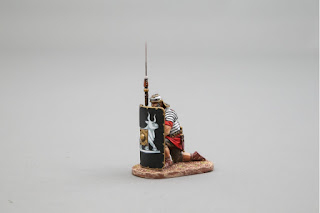

Here the Legionnaire is kneeling with Pilum raised all ready for the order to go into battle. For the review I received both the standard Red Shield variant as well as the black shield 9th Legion variant. It also comes in a 30th Legion version. You can see both the 9th Legion and Red Shield in the pictures above (the picture at the bottom shows all versions lined up). The figures posture is well sculpted and natural. The uniform, from Helmet to Sandals, is superbly detailed and not just the front but attention is given to all sides of the figure. Paintwork is of the usual high quality, shading is well done as is skin tone. What I've noticed is the uniformity in colour across all the Legionnaire miniatures which is important when dealing with uniforms. What else can I say? He is typical of Thomas Gunns extreme attention to detail across all aspects of the miniature. As usual 9th Legion and 30th Legion are limited editions so be quick if it's one of those you have your eye on. Would look great in any Roman diorama. He comes in a silver box and as usual great care has gone into the padding. To really appreciate how much care and attention Thomas Gunn go into their miniatures all you really need to do is look at the padding in a box. He retails at £32.50





The last Roman Legionnaire to be inspected today is a Legionnaire who can either be seen as in reserve waiting to go into battle or on sentry duty. The shield comes as a separate piece so you can use it or not as you see fit. For the review I received both the Red Shield and the 30th Legion miniatures. Like other Roman Legionnaires he also comes in a 9th Legion version. The pictures above show both the Red Shield and the 30th Legion miniatures. The last picture shows the miniature in with ROM002 and ROM003 figures to show how the look good as a collection and would be an excellent choice for a Roman Diorama. Like all the other figures there is no drop in standard in both the sculpt and the paintwork. Thomas Gunn figures are ones you just can't stop looking at with a big smile on your face. Care and attention is given to all sides of the miniature which goes without saying for Thomas Gunn. Remember if you want the 30th Legion or 9th Legion they are limited editions!He comes in a silver box and is very well padded. He retails at £32.50
Now we jump forward in time to WWII so we can review the next set of miniatures...



This is a special anniversary set of FJ020A - HMG Set (Normandy) that came in three different versions and is now sold out. As demand was great Thomas Gunn have decided to make another variant in a limited edition set of 100. I have to say this, if you only ever buy one Toy Soldier in your life I have no qualms at all in saying this is the one to buy, oh and be quick as it wont be around for long. We have two FJ manning a heavy MG 42, one FJ firing and the other loading. It's hard to find words that do this miniature justice. The sculpt right down to the tiniest detail is perfect and the paint work is a triumph. Even the FJ shooting has one eye closed and the other open! They also come with their separate small arms weapon for you to place where you see fit. It's a miniature I'll always treasure and one that will be the first to get shown to anyone interested (or not). You wont find anyone that isn't impressed even if they have no real interest in Toy Soldiers. Seriously be quick and snap this one up before it's gone for good. It comes in a silver box and the usual care as gone into padding. This little marvel retails at £70.


This along with it's variant summer version is the last FJ set Thomas Gunn is going to make this year. Not until next year will we see anything new with regards to the FJ and apparently in a format not previously released by Thomas Gunn which sounds very interesting, however that's for another time. For the review I received the winter version which you can see in the pictures above. The winter version is a limited edition of 100 and the summer version limited to 80. They are wearing winter smocks\trousers and are taking aim. Shell casings are scattered on the floor after being ejected whilst firing. It's the detail I love from Thomas Gunn. The sculpt and paintwork are of the highest quality. I love how Thomas Gunn manage to get personality into the faces of their miniatures, no standard look here. They have also got across the feeling of cold especially with the frost effect on their helmets. Another superb miniature from Thomas Gunn. If your after FJ in winter uniform firing a HMG for your diorama, then look no further. Or if you just love collecting Toy Soldiers you can't go wrong putting this in your collection. He comes in a silver box and is very well padded as we have come to expect. He retails at £69.

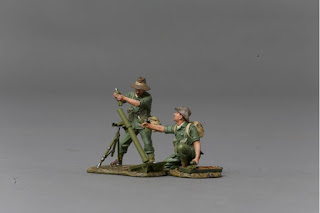

Here we have two Aussies who are laying down an intense mortar barrage to help out a patrol deep in the jungle. This A version are dressed in fatigues worn in the 1940's during jungle warfare. There will be a B version that will be in early war battledress worn during desert fighting or the fighting in Greece early on in the war. The A version is limited to 100 and the B version will be limited to just 80. The posture of the two figures is alive and full of animation as the sculpture has done a first class job in capturing this intense and frantic moment. The faces of the two Aussies show not only the situation they are in but also the personalities of these two men. Just like the sculpt the paintwork can't be faulted and believe me I do try! The figures are separate as is the mortar. As you'll soon see the next set I review go hand in hand with this one to create a dynamic little diorama. They come in a silver box with the usual first rate padding. This excellent set retails at £75 and is well worth every penny.



The final set I get to review is another Aussie two piece set. Here we have an Officer desperately trying to hear what's being said on the radio as the cacophony of battle sounds all around in the hot steamy jungle. Whilst his No2 sits patiently, all ready to write down the orders as and when they get relayed to him from his Officer, when he finally manages to hear them! The set comes with two separate weapons an M1 and a Owen MG to enhance any diorama you put them in. Now talking about a diorama, have you noticed yet? We have the perfect companion piece to make an excellent little diorama, yes that's right the Mortar set reviewed above! As you can see in the last picture they all look wonderful together. Getting back to the set, just like the mortar set above the sculpture has captured the moment exquisitely. Each figure tells a story! The paint work is fantastic as you now come to expect from Thomas Gunn. They also wear the same jungle fatigues as the Mortar set above. A Japanese tank will also be released soon for the RS series and then like the FJ series the RS series comes to an end.
This set is limited to 100 pieces. Comes in a silver box and is fully padded. The set retails £75
Being able to review Thomas Gunn miniatures is becoming the highlight for me with regards to running the blog. Opening each box is like a mini Christmas morning for me:) I really can't get over enough how impressed I am with their miniatures. I honestly do try to find something to fault, but so far no matter how hard I've tried I can't find anything. So until the next set of Thomas Gunn miniatures that come in for review I bid you good bye! (Oh and if you like any of the miniatures above and they are limited edition, then be quick, you've been warned)






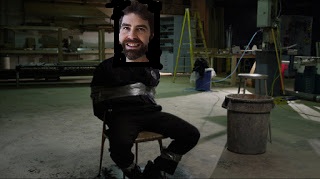
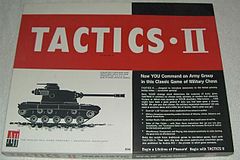


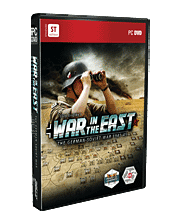





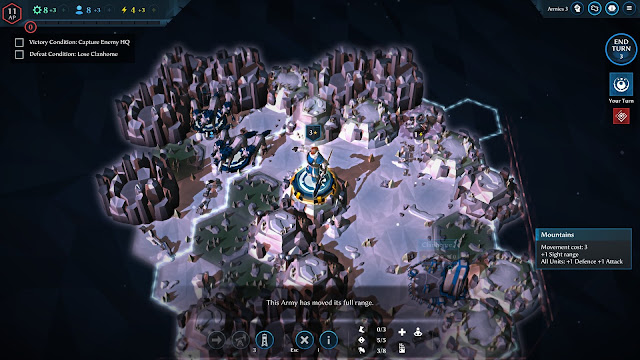





























Follow Us